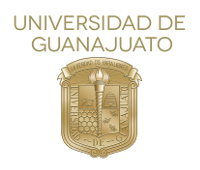Por favor, use este identificador para citar o enlazar este ítem:
http://repositorio.ugto.mx/handle/20.500.12059/2055Registro completo de metadatos
| Campo DC | Valor | Lengua/Idioma |
|---|---|---|
| dc.rights.license | http://creativecommons.org/licenses/by-nc-nd/4.0 | es_MX |
| dc.creator | LUIS ANTONIO PARRA NEGRETE | - |
| dc.date.accessioned | 2020-06-18T15:35:33Z | - |
| dc.date.available | 2020-06-18T15:35:33Z | - |
| dc.date.issued | 2010-12-01 | - |
| dc.identifier.uri | http://repositorio.ugto.mx/handle/20.500.12059/2055 | - |
| dc.description.abstract | Investigación aplicada para el aprovechamiento integral sustentable de vegetales nativos regionales, en la cual se extrajo fibra de seis especies de Agave (maguey); tres de hoja angosta (A. lechuguilla,A. angustifolia y A. tequilana) y tres de hoja ancha (A. americana,A. salmiana y A. mapisaga), utilizando tres métodos; 1) inmersión en agua a cielo abierto, 2) fermentación con y sin “aguamiel”, y 3) cocción de pencas. Se evaluó: color, olor, suavidad, enguiche, facilidad de desfibración, y tiempo empleado. En conclusión, el tratamiento más práctico fue el cocimiento de pencas, aunque no el más económico y ecológico. Los resultados obtenidos hasta esta etapa indican que de cada especie analizada se puede obtener papel y que éste presenta características distintivas que lo hacen atractivo para diferentes usos artesanales. Particularmente, las especies que produjeron los tipos de papel de mayor calidad para la escritura y el dibujo fueron A. salmiana y A. mapisaga | es_MX |
| dc.language.iso | spa | es_MX |
| dc.publisher | Universidad de Guanajuato | es_MX |
| dc.relation | https://doi.org/10.15174/au.2010.63 | - |
| dc.rights | info:eu-repo/semantics/openAccess | es_MX |
| dc.source | Acta Universitaria: Multidisciplinary Scientific Journal. Vol. 20 (2010) | es_MX |
| dc.title | Extracción de fibras de agave para elaborar papel y artesanías | es_MX |
| dc.type | info:eu-repo/semantics/article | es_MX |
| dc.creator.id | info:eu-repo/dai/mx/cvu/52861 | es_MX |
| dc.subject.cti | info:eu-repo/classification/cti/6 | es_MX |
| dc.subject.keywords | Fibras vegetales | es_MX |
| dc.subject.keywords | Usos de los agaves | es_MX |
| dc.subject.keywords | Fabricación de papel | es_MX |
| dc.subject.keywords | Elaboración de artesanías | es_MX |
| dc.subject.keywords | Vegetable fibers | - |
| dc.subject.keywords | Agave uses | - |
| dc.subject.keywords | Paper-making | - |
| dc.subject.keywords | Making handcrafts | - |
| dc.type.version | info:eu-repo/semantics/draft | es_MX |
| dc.creator.two | PEDRO DEL VILLAR QUIÑONES | - |
| dc.creator.three | Antonio Prieto Rodríguez | - |
| dc.creator.idtwo | info:eu-repo/dai/mx/cvu/255155 | es_MX |
| dc.description.abstractEnglish | Applied research for the sustainable integral use of regional native plants, which was extracted fiber from six species of Agave (common name maguey), three narrow-leaved (A.lechuguilla, A.angustifolia and A.tequilana) and three wide-leaved (A. americana,A.salmia-na and A.mapisaga) by using three methods: 1) cooking of pads), 2) fermentation with and without aguamiel (maguey sweet juice) and 3) immersion in water open sky. By considering the variables color, odor, softness, enguiche, easiness of defibration and time spent. In conclusion, most practical treatment was the boiling of the fleshy leaves, but not the most economical and environmentally friendly one. The results got up to this stage indicate that paper can be obtained from each of the six species and that it shows characteristic features which make it attractive to be applied in various craft uses. In particular, the species producing the most paper with the best quality, i.e., for writing and drawing, were A.salmianaand A. mapisaga | - |
| Aparece en las colecciones: | Revista Acta Universitaria | |
Archivos en este ítem:
| Archivo | Descripción | Tamaño | Formato | |
|---|---|---|---|---|
| Extracción de fibras de agave para elaborar papel y artesanías.pdf | 1.21 MB | Adobe PDF | Visualizar/Abrir |
Los ítems de DSpace están protegidos por copyright, con todos los derechos reservados, a menos que se indique lo contrario.

